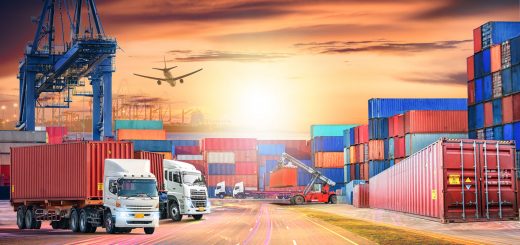The Challenges of Containerized Freight Shipping for SMEs
Introduction
In today’s interconnected world, containerized freight shipping plays a pivotal role in facilitating global trade and opening doors to untapped market opportunities. However, for SMEs, this mode of shipping comes with its fair share of challenges. In this article, we will discuss the complexity of containerized freight shipping and shed light on the hurdles SMEs encounter.
As a trusted freight forwarding expert, we understand the unique challenges faced by SMEs in navigating the vast seas of containerized freight shipping. This article will equip you with valuable insights and practical strategies to overcome these obstacles, enabling your business to thrive in the global marketplace.
So, let’s set sail and explore the world of containerized freight shipping for SMEs!
Benefits of Containerized Freight Shipping for SMEs
SMEs expanding their business on a global scale can benefit from containerized freight shipping by a number of factors. In this section, we will explore the key benefits that containerized freight shipping brings to SMEs.
- Global Market Access: Containerized freight shipping opens doors to international markets for SMEs. With containers, businesses can easily transport their products to distant locations, enabling them to reach new customers and tap into previously inaccessible markets. This expansion of market reach allows SMEs to grow their customer base, increase sales, and establish a stronger international presence.
- Efficient and Secure Transportation: Containerization provides SMEs with a streamlined and secure transportation solution. Shipping containers are designed to withstand various weather conditions, protecting the goods inside from damage. This level of security ensures that SMEs can confidently transport their products across long distances, minimizing the risk of loss or spoilage. Additionally, containerized freight shipping offers superior protection against theft, reducing the chances of pilferage during transit.
- Cost Optimization: Containerization offers cost optimization opportunities for SMEs. By utilizing standardized containers, businesses can maximize the use of available space, reducing shipping costs associated with wasted or unused capacity. Moreover, the ability to consolidate smaller shipments into a single container through less-than-container load (LCL) shipping enables SMEs to access the benefits of containerization without incurring the costs of a full container load (FCL). This cost-effective approach allows SMEs to allocate their resources more efficiently and compete on a global scale.
- Intermodal Connectivity: Containerized freight shipping facilitates seamless intermodal connectivity, ensuring efficient movement of goods across different modes of transportation. Containers can be seamlessly transferred from ships to trucks or trains, enabling SMEs to reach inland destinations swiftly. This intermodal capability enhances supply chain efficiency, reduces transit times, and ensures the timely delivery of goods to customers. SMEs can benefit from the seamless connectivity provided by containerization to optimize their logistics operations and maintain a competitive edge.
- Simplified Logistics: Containerized freight shipping simplifies the logistics process for SMEs. Standardized container sizes and shapes eliminate the need for custom packaging, reducing complexity and saving time. Containers can be easily loaded, unloaded, and transferred between various transportation modes, minimizing handling and reducing the risk of damage. This simplified logistics process enables SMEs to focus on their core business activities while leaving the complexities of shipping to the experts.
In summary, containerized freight shipping offers SMEs a multitude of benefits, including access to global markets, efficient and secure transportation, cost optimization, intermodal connectivity, and simplified logistics. In order to compete effectively in a global marketplace, SMEs can leverage these advantages.
Overview of Containerized Freight Shipping
As freight forwarding experts, we recognize the vital role that containerized freight shipping plays in the modern logistics landscape. This method of transporting goods has revolutionized the industry, providing a seamless and efficient means of moving cargo across vast distances.
Containerization offers several advantages over traditional shipping methods. Firstly, it simplifies the entire logistics process by standardizing the size and shape of shipping containers. These containers come in various dimensions, such as 20-foot, 40-foot, and larger sizes, accommodating a wide range of cargo types and volumes.
By utilizing standardized containers, businesses can optimize the packing and stacking of goods, maximizing the use of available space. This reduces the risk of damage during transportation and minimizes costs associated with wasted space and excess packaging.
Furthermore, containerization enables the seamless transfer of goods between different modes of transportation, including ships, trucks, and trains. These containers can be easily loaded onto vessels, swiftly transported to ports, and efficiently transferred to various modes of inland transportation. This intermodal capability ensures a smooth and uninterrupted flow of goods, enhancing supply chain efficiency.
The use of shipping containers also facilitates the consolidation of multiple shipments into a single container, a practice known as less-than-container load (LCL) shipping. SMEs can benefit from this option by sharing container space and thus reducing costs associated with full container loads (FCL). LCL shipping allows smaller businesses to access the benefits of containerization without having to fill an entire container, making it a cost-effective solution for SMEs with smaller shipment volumes.
Additionally, containerized freight shipping provides superior security and protection for goods. Shipping containers are built to withstand the rigors of long-distance transportation and protect the contents from external elements such as water, dust, and theft. This ensures that SMEs can confidently transport their products across borders, knowing they will arrive in pristine condition.
Containerized freight shipping offers SMEs a streamlined and efficient way to transport goods globally. By harnessing the standardized nature of shipping containers and the intermodal capabilities they provide, SMEs can overcome logistical challenges and take advantage of containerization’s numerous benefits.
Challenges Faced by SMEs in Containerized Freight Shipping
As seasoned freight forwarding experts, we understand that SMEs embarking on containerized freight shipping face unique challenges. There are several challenges SMEs face in containerized freight shipping:
- Cost Considerations: One of the significant challenges for SMEs in containerized freight shipping is managing costs. The expenses associated with container booking, transportation, handling, customs duties, and documentation can quickly add up, impacting the profitability of the business. SMEs often struggle to negotiate favorable rates due to their lower shipping volumes compared to larger enterprises.
To tackle this challenge, SMEs can explore options such as freight consolidation, where multiple shipments are combined into a single container, reducing overall shipping costs. Collaborating with freight forwarders who specialize in SMEs can also provide access to competitive pricing and optimized shipping solutions tailored to the specific needs of smaller businesses.
2. Capacity Constraints: Limited container availability poses a significant challenge for SMEs. Securing container space can be difficult during peak seasons or periods of high demand. This can result in delays, increased costs, and missed opportunities for SMEs to fulfill customer orders on time.
To mitigate capacity constraints, SMEs can consider long-term agreements or partnerships with shipping lines or freight forwarders, ensuring a more reliable and consistent supply of containers. Additionally, leveraging technology solutions and real-time tracking can help SMEs proactively manage their shipments and secure container space well in advance.
3. Regulatory and Documentation Requirements: Navigating the complex landscape of customs regulations and documentation is a daunting challenge for SMEs engaging in containerized freight shipping. Compliance with international trade regulations, including customs declarations, certificates of origin, and other documentation, requires time, expertise, and meticulous attention to detail.
To overcome these challenges, SMEs can seek guidance from experienced freight forwarders who possess in-depth knowledge of customs regulations and documentation requirements. Partnering with experts who can assist with the accurate and timely completion of paperwork can help SMEs avoid costly delays, penalties, and potential shipment seizures.
4. Infrastructure Limitations: Infrastructure limitations in ports, transportation networks, and distribution centers can pose challenges for SMEs in containerized freight shipping. Inadequate port facilities, congestion, and inefficient transportation systems can lead to delays, increased transit times, and compromised supply chain efficiency.
To address these limitations, SMEs can explore alternative port options or work with freight forwarders who have a strong network and knowledge of efficient routes and local infrastructure. Optimizing transportation routes and collaborating with reliable logistics providers can help SMEs navigate infrastructure challenges more effectively.
5. Supply Chain and Logistics Management: Managing a complex supply chain involving multiple stakeholders, including suppliers, freight forwarders, customs authorities, and end customers, can be overwhelming for SMEs. Coordinating the flow of goods, ensuring timely delivery, and maintaining inventory levels require efficient logistics management.
To overcome these challenges, SMEs can leverage technology solutions such as transportation management systems (TMS) and supply chain visibility platforms. These tools provide real-time tracking, automated processes, and data analytics, enabling SMEs to streamline their supply chain operations, improve visibility, and enhance overall efficiency.
While containerized freight shipping offers numerous benefits for SMEs, it also presents unique challenges. By addressing cost considerations, navigating capacity constraints, understanding and complying with regulatory requirements, tackling infrastructure limitations, and optimizing supply chain management, SMEs can effectively overcome these hurdles and unlock the full potential of containerized freight shipping. In the next section, we will delve into practical strategies and solutions SMEs can employ to overcome these challenges.
Strategies to Overcome Containerized Freight Shipping Challenges
As a trusted freight forwarding expert, we understand the importance of providing practical strategies and solutions for SMEs to overcome the challenges they face in containerized freight shipping. This section will explore effective strategies that SMEs can employ to navigate and conquer these obstacles.
- Establish Collaborative Partnerships: Collaborating with experienced freight forwarders and logistics partners who specialize in serving SMEs can be a game-changer. These experts possess industry knowledge, established networks, and negotiation power, allowing them to secure competitive rates, optimize shipping solutions, and provide valuable guidance throughout the process. By forming strategic partnerships, SMEs can leverage the expertise and resources of their logistics partners to overcome various challenges in containerized freight shipping.
- Leverage Technology Solutions: Technology plays a crucial role in streamlining and optimizing containerized freight shipping for SMEs. Implementing transportation management systems (TMS), supply chain visibility platforms, and digital documentation solutions can enhance operational efficiency, improve visibility, and automate processes. These tools enable SMEs to track shipments in real-time, manage documentation accurately, and gain valuable insights for informed decision-making. Embracing technology empowers SMEs to overcome capacity constraints, regulatory compliance, and supply chain coordination challenges.
- Optimize Freight Consolidation: Freight consolidation is a strategic approach that SMEs can utilize to reduce costs and overcome capacity constraints. By consolidating multiple smaller shipments into a single container, SMEs can take advantage of economies of scale, share transportation costs, and increase their bargaining power with shipping lines. Working with freight forwarders specializing in consolidation enables SMEs to access reliable and cost-effective shipping solutions, even with smaller shipment volumes.
- Enhance Supply Chain Visibility: Real-time visibility across the entire supply chain is crucial for SMEs engaged in containerized freight shipping. Implementing supply chain visibility solutions allows SMEs to track the movement of goods, monitor inventory levels, and proactively address any issues or delays. By improving supply chain visibility, SMEs can make data-driven decisions, optimize inventory management, and ensure the timely delivery of goods to customers.
- Invest in Training and Education: SMEs can invest in training and education programs for their staff to enhance their understanding of containerized freight shipping. Providing employees with comprehensive knowledge about logistics, customs regulations, and documentation requirements equips them to navigate challenges more effectively. Industry-specific training programs, workshops, and seminars can empower SMEs to proactively address challenges and optimize their containerized freight shipping operations.
By implementing these strategies, SMEs can overcome their challenges in containerized freight shipping and position themselves for success in the global marketplace. SMEs must adapt to changing industry dynamics, embrace technology solutions, and leverage the expertise of their logistics partners to optimize their containerized freight shipping operations.
Conclusion
Containerized freight shipping presents opportunities and challenges for small and medium enterprises (SMEs) looking to expand their presence in the global marketplace. In this article, we have explored the various challenges SMEs face in containerized freight shipping and provided strategies to overcome them.
By understanding the cost considerations, capacity constraints, regulatory requirements, infrastructure limitations, and supply chain management complexities, SMEs can proactively address these challenges and position themselves for success.
Through collaboration with experienced freight forwarders like Fortune Global, leveraging technology solutions, optimizing freight consolidation, enhancing supply chain visibility, and investing in training, SMEs can navigate the complexities of containerized freight shipping and unlock its potential.
As the global trade landscape continues to evolve, it is imperative for SMEs to remain adaptable and embrace technological advancements. Staying informed about industry trends, leveraging digital solutions, and seeking guidance from logistics experts will empower SMEs to overcome future challenges and seize growth opportunities.
In conclusion, containerized freight shipping can be a powerful tool for SMEs to compete in the global marketplace. By recognizing and addressing the challenges, implementing effective strategies, and embracing innovation, SMEs can navigate the seas of containerized freight shipping and achieve sustainable success.
We hope this comprehensive guide has provided valuable insights and practical solutions for SMEs venturing into containerized freight shipping. Remember, with the right approach, proactive measures, and the support of experienced partners, your SME can thrive in the dynamic world of global trade.



